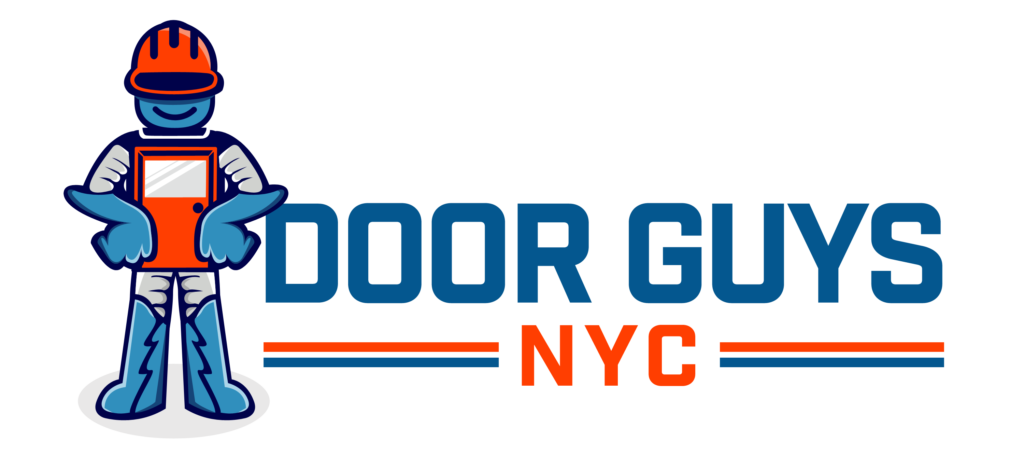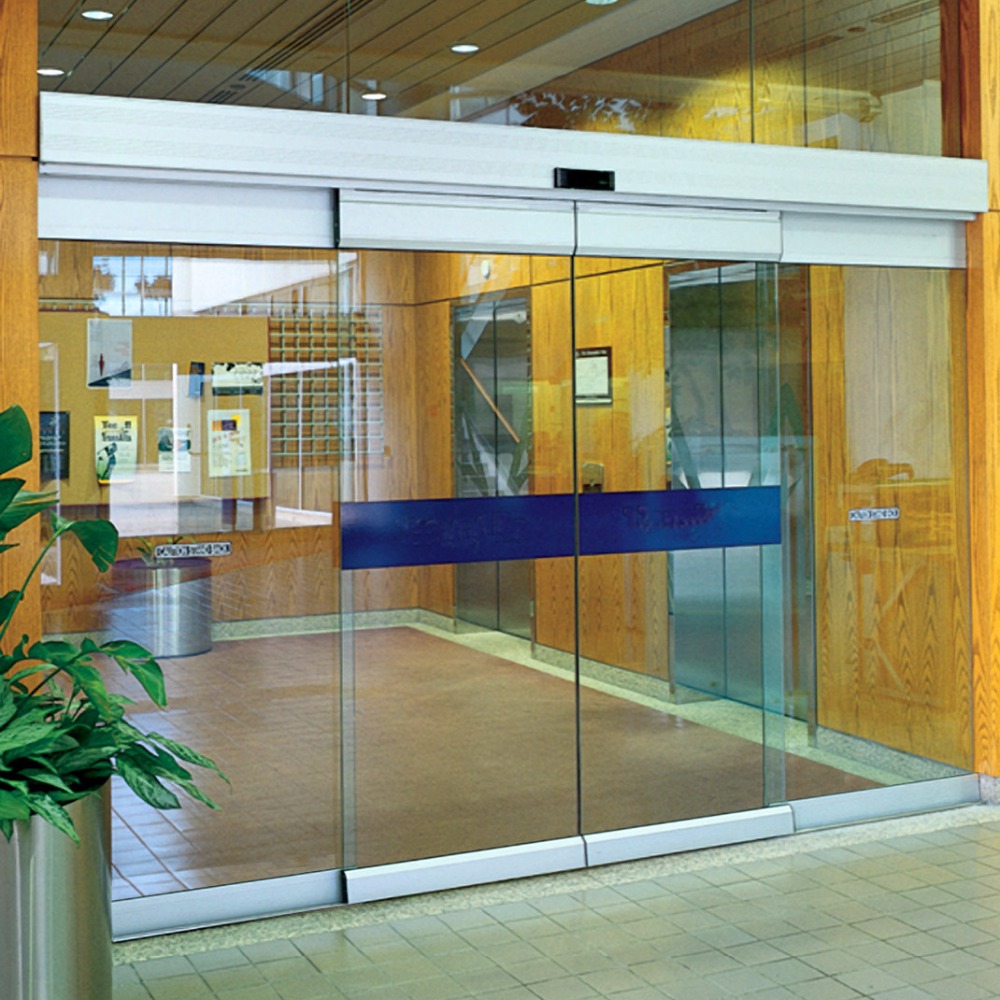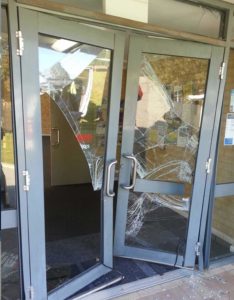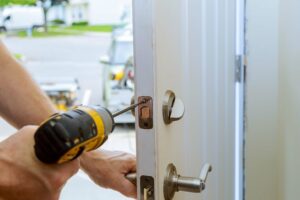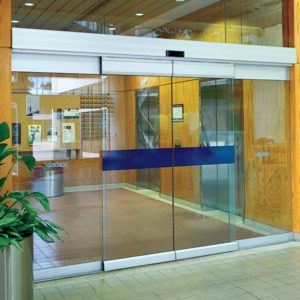You know that feeling when you walk up to a store and the doors magically open for you? Well, turns out that magic doesn’t fade away even when you’re an adult.
Automatic sliding doors in NYC are everywhere, from your corner bodega to the massive glass entrances at Hudson Yards, and they’re way more complex than most people realize. Here’s how an automatic sliding door works.
How Do Automatic Sliding Doors Work?
At its core, an automatic sliding door is pretty straightforward. When a door controller receives an activation signal from a sensor, it activates the gear motor to drive the belt and pulley system.
When you walk toward the door, motion sensors detect your movement and send a signal to the control unit. The brain of the system decides whether to open the door and then tells the motor to get moving. The motor activates a belt or chain connected to a motorized pulley system, causing the door panels to slide along their tracks.
The whole process takes about 2-3 seconds from the moment you’re detected to when the door is fully open. It’s fast enough to feel seamless but slow enough to be safe.
What Main Components Help Make It Work?
The Sensors
Most automatic doors use a combination of different sensors to work properly. Motion sensors detect when someone’s approaching, while presence sensors can tell if someone’s still standing in the doorway. Safety sensors make sure the door doesn’t close on anyone, because nobody wants to get caught by a closing door, especially in NYC, where everyone’s always in a hurry!
The Control Unit
Advanced control units incorporate programmable settings for customized operation and receive input from various sensors to determine when to open, close, or pause the doors. In NYC’s commercial buildings, these systems often connect to building management systems for monitoring and maintenance.
The Motor System
The motor mechanism connects to an electric drive train that controls the clutch mechanism attached to the cog wheel, which moves the door panels. Most modern systems use DC motors because they’re quieter and more energy-efficient.
What Type of Sensors Are Used?
1. Microwave Motion Sensors
These detect movement by bouncing microwave signals off moving objects. They work well in busy environments because they can distinguish between people and objects like shopping bags or strollers.
2. Infrared Sensors
These detect body heat and work reliably in most conditions. However, they can struggle during extreme temperature variations when the difference between body heat and ambient temperature gets smaller.
3. Pressure Mats
Often used as safety sensors, these activate when someone steps on them. They’re particularly common in retail locations.
4. Optical Beam Sensors
These create invisible beams across the doorway. When the beam is broken, the door activates. They’re reliable but require regular cleaning.
Also Read: How to Tell When It’s Time to Replace Your Interior Doors
How Do You Maintain Automatic Sliding Doors?
With the hours of overtime your automatic sliding doors do, it’s a wonder that these doors survive this long! Here’s how automatic sliding doors generally need to be maintained.
Track Cleaning: NYC’s environment deposits more grime on door tracks than cleaner environments. Regular cleaning prevents buildup that can cause doors to stick or operate roughly.
Sensor Calibration: Temperature extremes and building settling can affect sensor positioning. Regular calibration ensures doors open and close at appropriate times and distances.
Motor Maintenance: High-usage environments require more frequent lubrication and component inspection to prevent unexpected failures.
Common Problems You Might Encounter
With automatic sliding doors, there’s always something or the other that could go wrong. Here are some common situations you might find yourself in.
- Doors Not Opening: Usually sensor-related, often caused by dirty sensor housings or calibration drift. Sensors need more frequent cleaning than manufacturer recommendations suggest in dusty environments.
- Slow Operation: Often caused by track contamination or motor wear. The high-traffic environment accelerates both issues compared to typical installations.
- Erratic Behavior: Can result from electrical interference from nearby equipment or building systems. These systems usually require additional shielding or sensor repositioning.
The Bottom Line
Understanding how automatic sliding doors in NYC systems work helps building owners and managers maintain these critical access points more effectively. These systems combine multiple technologies to create seamless building access while dealing with challenges unique to urban environments.
From the sensors that detect your approach to the motors that smoothly slide heavy glass panels, automatic doors represent sophisticated engineering adapted to NYC’s demanding conditions.
When your building needs automatic door installation, maintenance, or repair that understands the city’s unique challenges, Door Guys NYC brings the expertise and experience to keep your entrances operating reliably in America’s toughest urban environment.
Drop us a message and we’ll see what we can do for you!
